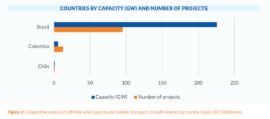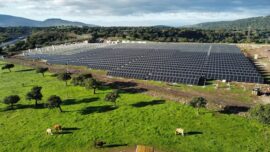Highlights :
- The situation has arisen thanks to Chinese made modules crashing to historic lows of 14 cents and under per watt-peak.

Even as prices of China-made solar cells and modules continue to slide to unprecedented lows, power consumers are likely to benefit only partially, thanks to the Basic Customs Duty (BCD) of 40 percent that the government has on module imports, besides the 25% on solar cell imports.
While the drop in prices is welcome to developers who bid for solar projects in the range of Rs 2.3 to Rs 2.70 per/kW, with an expectation of prices in the range of 18- 21 cents/wp, which is what they end up paying on current prices of 14c/watt-peak after factoring in BCD, it does mean that eventual users are missing out on an opportunity to benefit from lower power costs.
A developer who did not want to be named asserts that bids could have been as low as Rs 1.90- Rs 2.00 without the BCD in India. For a government that swears by the mantra of lower costs, the situation could be embarrassing if the low costs internationally continue for an extended period of time. The situation is further complicated with some of the largest developers like Adani, Tata Power, and even Renew Energy having their own module manufacturing operations or planning to have one soon.
That would imply that Indian consumers are paying the cost for the energy security of a domestic manufacturing industry, which may or may not be competitive in the long term either. However, we did hear government functionaries say last year that they were comfortable with a solar price of around Rs 2.50 per unit if that is what it took to ramp up domestic manufacturing. Those views might be changing now.
Indian manufacturers, meanwhile, who lobbied hard to get the BCD imposed, are not complaining yet, unlike their European counterparts, who are already unable to compete with these Chinese costs thanks to higher overhead and compliance costs.
Indian manufacturers have found a good release in the US markets for now, where exports shot up over 1000 percent to $616 million this year in April- July. But in a sign of things to come, the European market is effectively shut to Indian imports, thanks to more competitive Chinese competition, as well as massive ‘dumping’ that has led to an inventory pileup almost twice the expected demand till 2024.
For now, most manufacturers have been asserting that prices have found a bottom, and the only way is up from these levels. But for the large, integrated Chinese players, it might be worth the slight pain to see if they can push competition in other regions further, weaken them for the coming battles across regions, and dissuade many others from establishing fresh capacities.
The issue is particularly relevant, with almost 100 GW of manufacturing capacities planned across the US and Europe in the next three years on the back of generous incentives. With most incentives set to last till 2030, the question in the minds of many of those firms will be, after 2030, what margins?






























